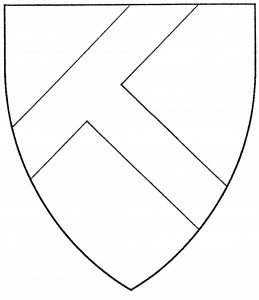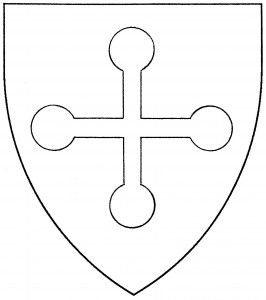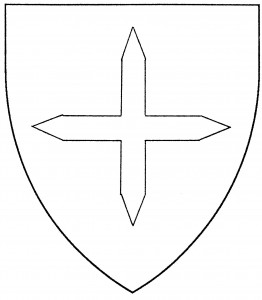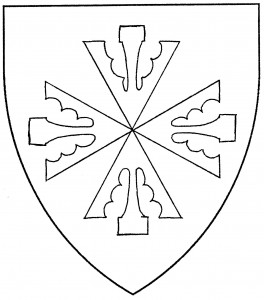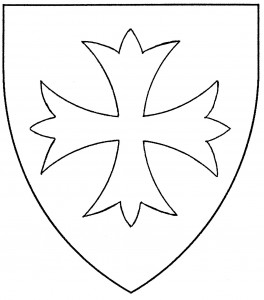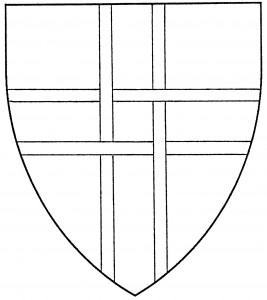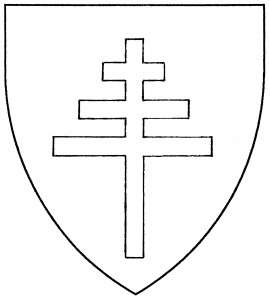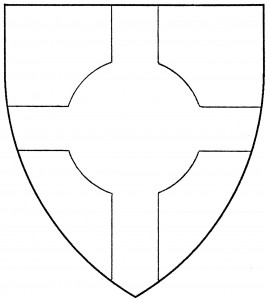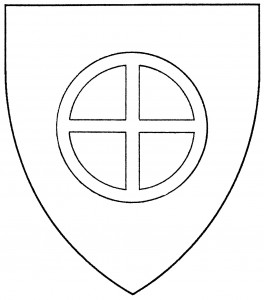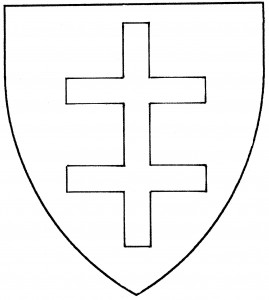
Doubled cross (Period)
The “patriarchal cross” dates from at least c.1370, in the arms of the Kings of Hungary [Gelre 52v]. In its earliest depictions, it was shown with two crosspieces of equal length; and period blazons called it a Doppelkreuz, “doubled cross”. (The frontispiece to Siebmacher, 1605, blazons it as ein zweyfaches creutz, “a two-shelf cross”.)
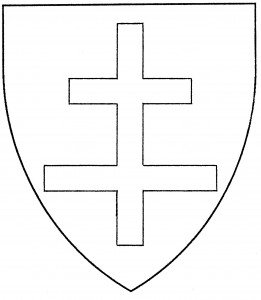
Cross of Lorraine (Period)
Around the 15th Century, the lower crosspiece began to be drawn slightly longer; this variation was found throughout Eastern Europe (Ingeram, c.1450 [35], attributes it to St. Ladislaus, d.1095). René d’Anjou, who among his other titles was Duke of Lorraine, claimed the throne of Hungary, and used this cross as his badge; at the Battle of Nancy, 1477, René’s soldiers bore the Duke’s cross, which thereafter became known as the “cross of Lorraine”. [Sir George Bellew, “Two Crosses”, Coat of Arms, I(7), July 1951, p.227]
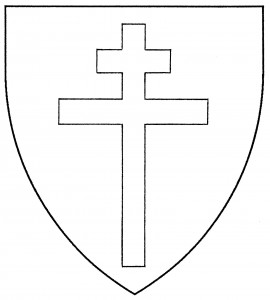
Patriarchal cross (Period)
Meanwhile, a form of the cross with a longer lower limb was still being called a “patriarchal cross” in England, in the arms of Brytton, c.1460 [RH]; and this is the form so named in most modern heraldry texts [e.g., Neubecker 107]. All of these forms are considered artistic variations, with no heraldic difference granted between them.
Karolus Janos bears: Sable, a patriarchal cross argent.
Lorraine Marcus bears: Quarterly vert and Or, a cross of Lorraine sable.
Deomotheor Zÿdmond bears: Azure semy of doubled crosses, a bordure Or.
